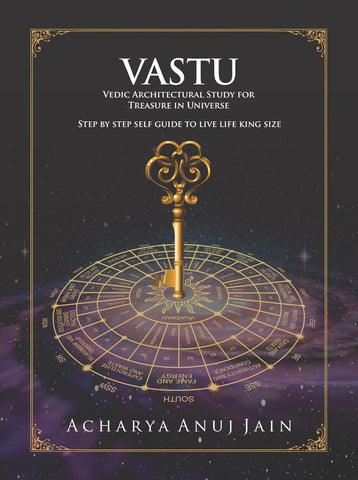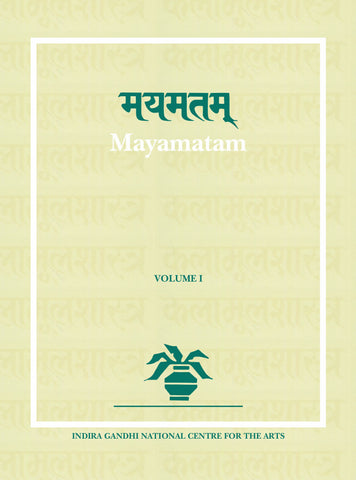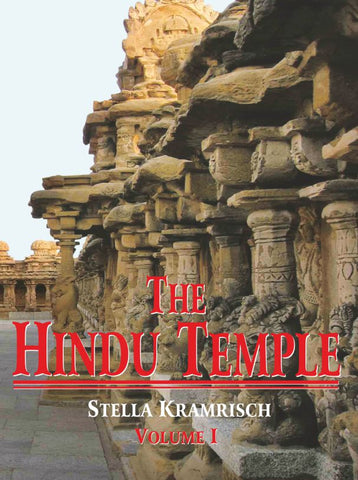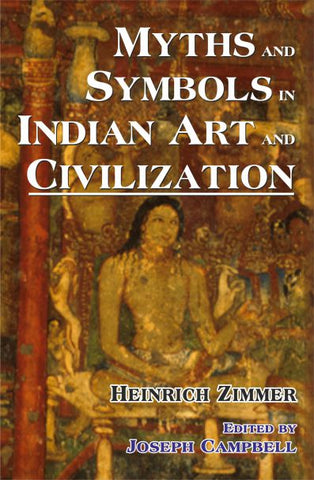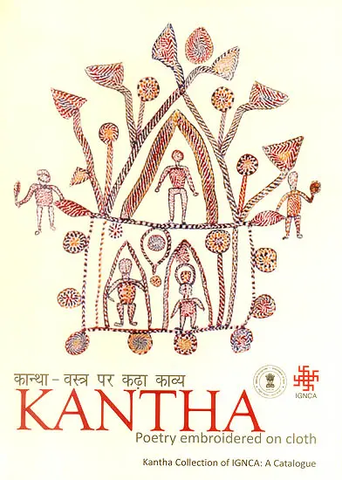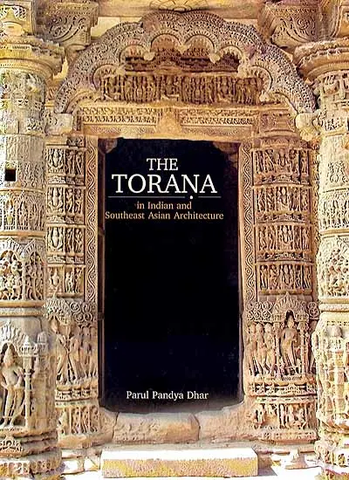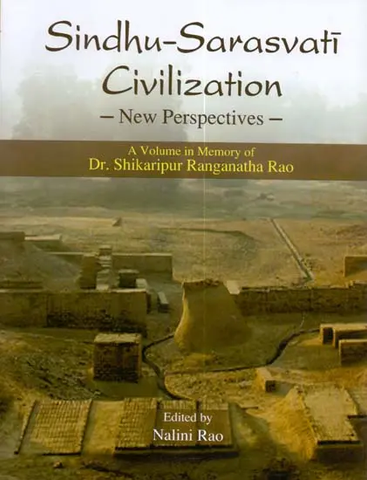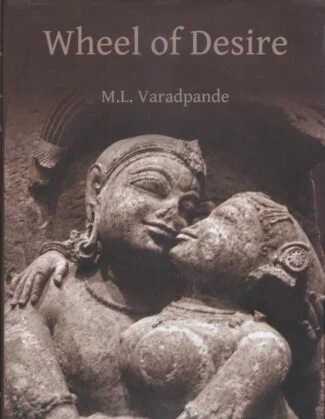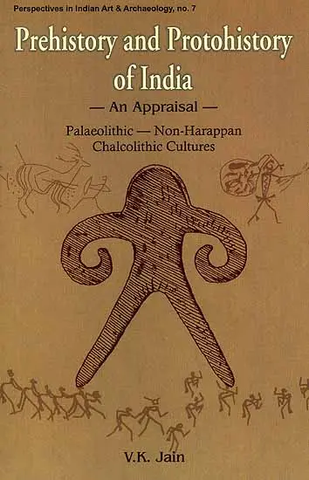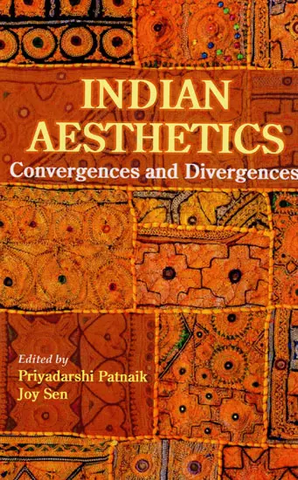Your cart is empty now.
Milan Kumar Chauley is Superintending Archaeologist, Aurangabad Circle, Archaeological Survey of India. He completed Graduation in 1994 from Utkal University in History (Honours) with first class; Post-Graduation in AIHC & Archaeology from Deccan College Postgraduate and Research Institute, Pune in 1996 with first class; PG. Diplomas in Archaeology from Institute of Archaeology, New Delhi in 1998 with first class; Diplomas in Tourism from IGNOU and Museology from Solapur University and P.G. Diploma in Industrial Relation and Personnel Management from Bharatiya Vidya Bhavan. He has first class throughout his academic career. He was awarded PhD in Archaeology in 2005 from Utkal University for his work "Buddhist Establishment in Orissa-A case study of the Excavated Remains at Lalitgiri".
He has served as Documentation Officer at the Dept. of Archaeology, Govt. of N.C.T. of Delhi; Assistant Archaeologist, Excavation Branch II (New Delhi) and Excavation Branch IV (Bhubaneswar) and Superintending Archaeologist (Conservation) and Superintending Archaeologist (Antiquity) in the Head Quarter of ASI, Delhi and Superintending Archaeologist, Guwahati and Hyderabad Circles. He has more than two dozen scholarly articles on various aspects of archaeology, particularly art and architecture (Hindu and Buddhist) of Assam and Orissa, published in various journals and books. He has published two books, namely "Suryapahar: A monument of Excellence in North-East" and "Pre and Proto History of Eastern India".
Apart from participating in various excavations, he has directed several excavation and exploration projects in Assam, Mizoram, Telangana and Odisha and took up conversation works on the monuments under Guwahati and Hyderabad Circles. As a member of the Indian Delegation, he has attended symposiums and workshops in Sri Lanka and USA in 2011 and 2015 respectively. He is a member of academic societies like Indian History Congress, Heritage Care Association (NRLC, Lucknow), Indian Society for Prehistoric and Quaternary Studies and Indian Archaeological Society.
Manjil Hazarika is Assistant Professor at the Department of Archaeology, Cotton University in Guwahati, Assam. After completing an MA in Ancient Indian History, Culture and Archaeology from Deccan College Postgraduate and Research Institute in Pune in 2005 with first class first position, Hazarika joined the International Master in Quaternary and Prehistory at Universitat Rovira i Virgili in Spain under the Erasmus Mundus Master Program financed by the European Union and worked on the museum collections of stone artifacts from Jinja in Uganda, kept at the Institut de Paleontologie Humaine of Museum National d'Histoire Naturelle in Paris .
He has also completed PG Diploma in Heritage Management and Tourism from Tilak Maharashtra University, Pune in 2009. In 2014, Dr. Hazarika completed PhD from the Bern University in Switzerland and was awarded the highest accolade of Summa cum laude (with highest honour). He is the recipient of Prof H.D. Sankalia Memorial Gold Medal Award, Prof. S.N. Rajaguru Geoarchaeology Cash Prize Award, Late Shri Katragadda Subbaiah Cash Prize Award and Pandit Hemchandra Goswami Memorial Award. He has published a number of research papers in reputed joumals and other publications and also presented several papers at different conferences held in China, Czech Republic, Ethiopia, France, Ireland, the Netherlands, South Korea, USA and India. His previous publications include "50 Years After Daojali-Hading: Emerging Perspectives in the Archaeology of Northeast India- Essays in Honour of Tarun Chandra Sharma" (co-edited with Tiatoshi Jamir, 2014, Research India Press), "Glimpses of Aksumite Heritage: Through the Artworks of Solomon Weldegebreal" (co-authored with Colette Vester, 2015, Mekelle University Press) and "Prehistory and Archaeology of Northeast India: Multidisciplinary Investigation in an Archaeological Terra Incognita" (2017, Oxford University Press).
Previously he has served at the Indian Archaeological Society, New Delhi as a Research Associate from 2010 to 2013 and at the Department of Heritage Conservation of the Institute of Paleoenvironment and Heritage Conservation, Mekelle University in Ethiopia as Assistant Professor from 2013 to 2015. He was associated with the Mekelle-Heidelberg project on Survey, Excavation and Training in Archaeology and Heritage Management at Mifsas Bahri archaeological site near Hashinge lake in Ethiopia. Hazarika was also a member of the Inda-French research team which discovered anthropic activities at Siwaliks of Northwest India dating back to 2.6 Million years ago.
Currently, he is the Convener of Kamrup Chapter of the Indian National Trust for Art and Cultural Heritage (INTACH) and engaged in various activities for promotion and preservation of cultural heritage in Assam.
The Guwahati Circle of the Archaeological Survey of India, as part of the World Heritage Week Celebration in November 2016, organised two symposiums in collaboration with the Department of Archaeology of Cotton University, first in the campus of North East Zone Cultural Centre in Dimapur on 22nd November, inviting scholars from Nagaland University (Departments of History and Archaeology), The Global Open University in Nagaland and Cotton University (Departments of Archaeology) in Guwahati. The second symposium was held at the Vivekananda Kendra Institute of Culture, Uzan Bazaar in Guwahati on 25th November, 2016. The topic of the symposiums at both the venues was "Archaeological Research in Northeast India: Recent Trends and Future Prospects". Both the symposiums were well attended and a number of papers were presented by scholars and researchers from different parts of Northeast India belonging to various institutions. In the concluding sessions, resolutions were taken to publish the presented papers along with some invited papers in a book form as an outcome of the symposiums. Accordingly, the editors invited academicians, scholars and researchers working on the archaeology of Northeast India for contributing papers for the present volume. We are thankful to all the contributors for accepting our requests and penning down their research results in this volume. We also appreciate their kind cooperation in attending our several rounds of queries in connection with editing of the chapters and finally in the publication of this volume in its present form. The editors acknowledge the delay in its publication, the reasons being various and beyond the control of the editors.
Northeast India is the easternmost region of India, both geographically and administratively; and it covers an area of 2,62,230 sq km. It comprises of eight states namely Arunachal Pradesh, Assam, Manipur, Meghalaya, Mizoram, Nagaland, Sikkim and Tripura. Northeast India today is connected with rest of India through a corridor called the "Chicken's Neck Corridor" or Siliguri Corridor, a narrow stretch of land about 22 km from the state of West Bengal, with the countries of Nepal and Bangladesh lying on either sides of the corridor. The other countries with which it shares borders are China (Tibet), Myanmar and Bhutan.
In the historical period, almost whole of present day Northeast India along with Bhutan and Sylhet in Bangladesh were part of the Kamarupa Kingdom. It was during 19th and early 20th century under the British rule, there were drastic changes in the life of the people of the region in terms of migration, settlement, economy, religious practices (including some states completely converting to Christianity), beliefs, way of living, art, craft, architecture, and technology, etc.
It was during this time that the British, like in other parts of the country started exploring the landscape and thus the archaeological research in Northeast India started with the first reporting of a stone artefact from Assam by Sir John Lubbock in 1867. Archival records of the British officers are the marvellous source documents on the archaeological remains of the region. Since then, with the initiatives taken by colonial administrators and Indian scholars, the research on the archaeology of the region slowly gained importance and subsequently reached the present state of understanding of the rich archaeological past.
In spite of the above, there are a lot of gaps and several important albeit basic questions to be answered. Northeast India has not seen that progress in the field of archaeological research that is seen in the rest of the country and the world. The whole region needs intensive and extensive explorations followed by systematic and scientific excavations. This was emphasised by H.K. Barpujari while speaking about the difficulty in compiling a comprehensive history of Assam "is not an easy one - not because of the dearth of materials, but because they are yet to be salvaged and unearthed'. Then the question arises why it has to be salvaged or unearthed. The answer may be sought in the writings of Rai Bahadur K.L. Barua, particularly in his magnificent book 'Early Hictog of Kamarupa' , published way back in 1933. The arguments he made hold true even today which state:
"Some of the legends which have been mentioned suggest that in the distant past the inhabitants of the country which we now call Assam attained considerable power and a fair degree of civilization ... This being so, the question will doubtless be asked why so few memorials of their time have come down to us. The reason is that nature has vied with man in destroying them. The Brahmaputra valley is an alluvial country, and the impetuous, snow fed rivers which debouch from the Himalayas find so little resistance in its friable soil that they are constantly carving out new channels and cutting away their banks; consequently no building erected in their neighbourhood can be expected to remain for more than a limited time, except at a few points like Guwahati, where rock pierces through the alluvium.
Though occurring at distant intervals, violent earthquakes are, in Assam, quite as great cause of destruction as fluvial action; there are few masonry structures which could resist a shock like that of 1897, which not only laid in ruins the town of Shillong, Guwahati and Sylhet, but also overthrew many of the monoliths, which are so marked a feature of the Khasi and Jaintia Hills, and broke down most of the piers of the Sil Sako, an ancient stone bridge, not far from Hajo, which marks the bed of a river that has long since left it and taken another course. A less sudden, but almost potent cause of damage is found in the luxuriant vegetation of the county. The pipal in particular is a great enemy of masonry buildings; and once a seed of this tree has germinated in the interstices of such a building, its downfall is only a question of time. Owing to this cause, many neve of the more recent Ahom palaces and temples are already in a state of decay ... The ruins which still survive represent only an inconsiderable fragment of the buildings that were once in existence, but more will doubtless come to light when the jungle which now covers so vast an area in Assam comes to be removed to make way for the extension of cultivation".
The excavations at Ambari in the city of Guwahati (by the Gauhati University, Directorate of Archaeology of Govt. of Assam and Archaeological Survey of India, Guwahati Circle) and Bhitoripam in Lakhimpur district (by the Archaeological Survey of India, Guwahati Circle) have invariably shown that finding of the remains of 7th - 9th century CE needs archaeological digging up to a depth of 2 -2.40 m. And only at Ambari, the Sunga-Kushana level was reached at a depth of 6+ m. It is most likely that the early historical remains and earlier levels are buried deep down in the alluvial deposits. The Tamreswari, a Archaeological Survey of India protected monument near Sadiya is now not traceable after the 1950 earthquake, and on inquiry, it was revealed to have got buried about 15-20 feet below the alluvial deposits due to change in the course of the river.
The whole region of Northeast India is so thickly forested and in most of the regions, intermittent rain persists for 8 to 10 months in a year. In the winters, the days are short and become dark by 4 - 4.30 pm. The growth of vegetation in the rainy months hamper in observing the surface and the archaeological material therein. Most of north-eastern parts of India are infested with various types of venomous reptiles and insects, which further make field research difficult and risky.
Conducting archaeological explorations and excavations require scientific technology and advanced tool-kits involving sumptuous fund, collaboration among trained and dedicated researchers. The Government of India and the respective State Governments will have to come forward in'this regard. At present, not all the states in the northeast have State Departments of Archaeology and are not well-equipped with necessary infrastructure, resources and trained manpower. Only Assam, Meghalaya, Nagaland and Tripura have departments of archaeology in the universities. Lack of manpower and avenues in the field, is another big hindrance.
The other problem for the researchers is the harsh topography coupled with problem of accessibility. The road connection in many parts of Northeast India is extremely poor and not every distant corner is internally accessible. For example, one has to always return to Assam and then enter Arunachal Pradesh to access many of its remote regions. In many parts of Northeast India, even today there is no regular transport facility to every village from the nearest town. Only when there are certain number of passengers the vehicle leaves and vice-versa. The roads are mainly kutcha narrow roads and during the monsoon they become even more inaccessible, i.e. a return trip to Vangchhia, an ASI protected site in the Champhai district from Aizawl at a distance of 237 km may take up to 3 days.
It gives me immense pleasure in writing this foreword for the book "Archaeology in Northeast India - Recent Trends and Future Prospects - Essays Celebrating 150 Years of Research" edited by two young and budding archaeologists of the country, both of whom happens to be my students also. The book is an outcome of the papers presented at two symposiums in Dimapur and Guwahati on the occasion of World Heritage Week in November 2016. Besides, there are some papers contributed by young and upcoming students and scholars as well as senior scholars in the field. The chapters included in the volume provide a glimpse of the recent researchers conducted in the north-eastern part of India, which no doubt will help the scholars and students for expanding their horizons on the cultural heritage of the region.
In spite of the fact that the Northeast India is well known for its ethnic, cultural, linguistic and natural diversity, the region has not witnessed flurry of systematic scholarly research activities. However, recently some of the students graduated from Deccan College, Deemed University and working as faculty in various institutions of higher studies in the region have initiated systematic and scientific research on the people and culture of Northeast. The Indian region bordering with the Eastern Asiatic world has evidence of a mosaic of culture of the East and the West. Suniti Kumar Chatterji in his celebrated work "The Place of Assam in the History and Civilization of India" rightly equated the Northeast Indian region with Northwest India, through which the country was linked with Western and Central Asia. Through these two corners of the subcontinent men, material culture and ideas have traversed since prehistoric times and gave rise to the inestimable variety of races and cultures with which India is distinguished today.
Archaeological researches conducted in the last 150 years have brought to light a culture sequence right from the Paleolithic period to the late historical periods in the region. Scholars and students from the departments of Anthropology, Archaeology and History of various universities located in Northeast India and various state level departments of archaeology, art and culture and the Archaeological Survey of India have undertaken several important explorations and excavations which are providing the base for our understanding of archaeological past of the region. These have also resulted in discovery of the widespread Neolithic cultures, a living Megalithic tradition continuing for ages, monoliths of Golaghat and Dimapur, the famous early historic site of Ambari having remains right from the Sunga-Kushana period and the Ambari Kaolin ware, Buddhist and Jaina vestiges in the form of stupas, viharas and sculptures, wide distribution of Brahmanical sculptures, art and architecture and temple constructions, burial mounds of the Ahoms known as the Moidams and many more. The places like Sri Surya Pahar has remains of Hindu, Buddhist and Jain traditions indicating a strong religious harmony from ancient times in this region. However, a lot more research is needed to understand prehistoric cultural and technological developments, palaeo-environment, chronology, pottery sequence, burials and skeletal studies, process of urbanisation, etc. Right from the prehistoric times till today the region is well connected culturally to the rest of India. Conservation, preservation and developing sites and monuments from touristic point of view is another crucial field which needs attention from all the stakeholders. The biggest challenge we all have is how to prevent destruction of cultural wealth of the Northeast. In this regard, public archaeological approach would be highly beneficial where all the ethnic communities of the region take pride in their cultural identity and collective pasts. The repository of the traditional knowledge system should be utilised for posterity and well-being of the people.
Lack of published materials and access to the archaeological remains of north-eastern part of India is an often felt limitation. Many of the good works are published in local journals and books which are not easily accessible for everyone. Hence, it is pertinent and extremely important to compile and put together the research works in a collective manner for the benefits of the scholarly world. I congratulate Dr. Milan Kumar Chauley and Dr. Manjil Hazarika for undertaking this painstaking task of collecting and editing the papers and bringing out the volume in the present form. I wish that the book published by the Research India Press in New Delhi shall be well-appreciated by the academicians and students and will be a useful sourcebook for everyone interested in the archaeology of Northeast India.
Delivery and Shipping Policy
- INTERNATIONAL SHIPPING
- Rs.1000-1100/kg
- ESTD. Delivery Time: 2-3 weeks (depending on location)
- Bubble Wrapped with Extra Padding
- NATIONAL SHIPPING
- NCR: Rs. 30/half kg
- Standard: Rs. 80/half kg
- Express shipments also available on Request
- ESTD. Delivery Time: Ranging from 1-4 days up to 7 business days (Depending on your choice of Delivery)
- TRACKING
- All orders; national or international, will be provided with a Tracking ID to check the status of their respective orders
- Depending on the Shipping Service, Tracking ID may be used on their respective tracking portals
Frequently Asked Questions (FAQs)
Domestic Shipping: 3-4 Days (after shipping)
International Shipping: 1-2 weeks (based on your location)
You will receive an email once your order has been shipped or you can email us if you didn't receive tracking details (info@mlbd.co.in)
Every book that we sell is the latest edition except all the rare books
Yes, we do provide free shipping, only on domestic orders (within India) above Rs.1500











